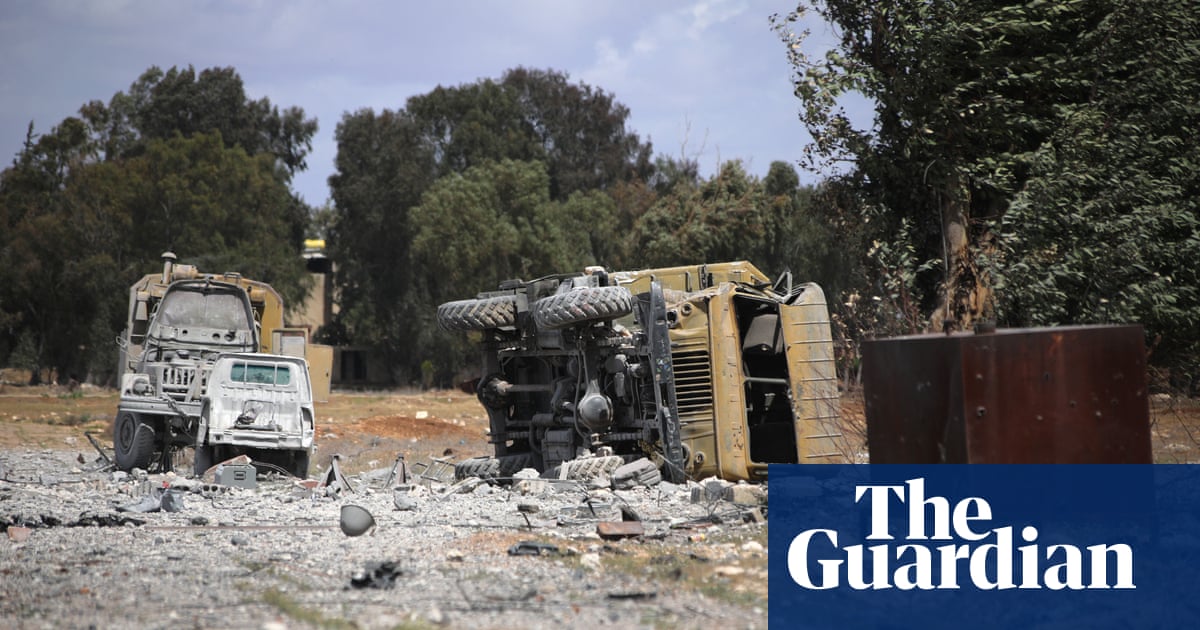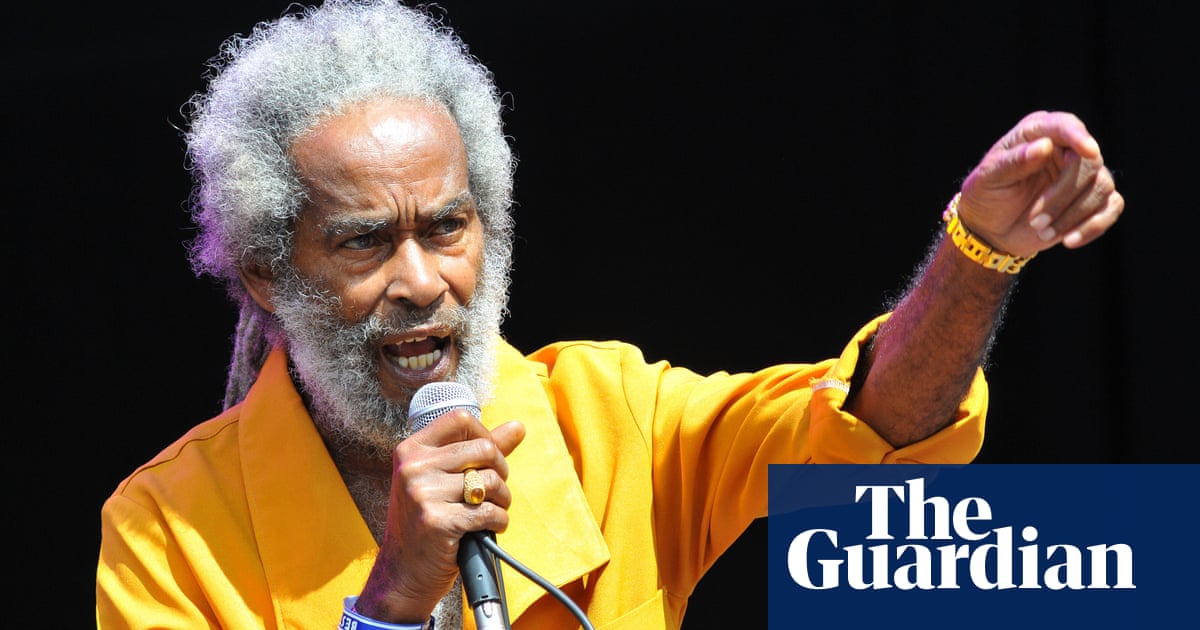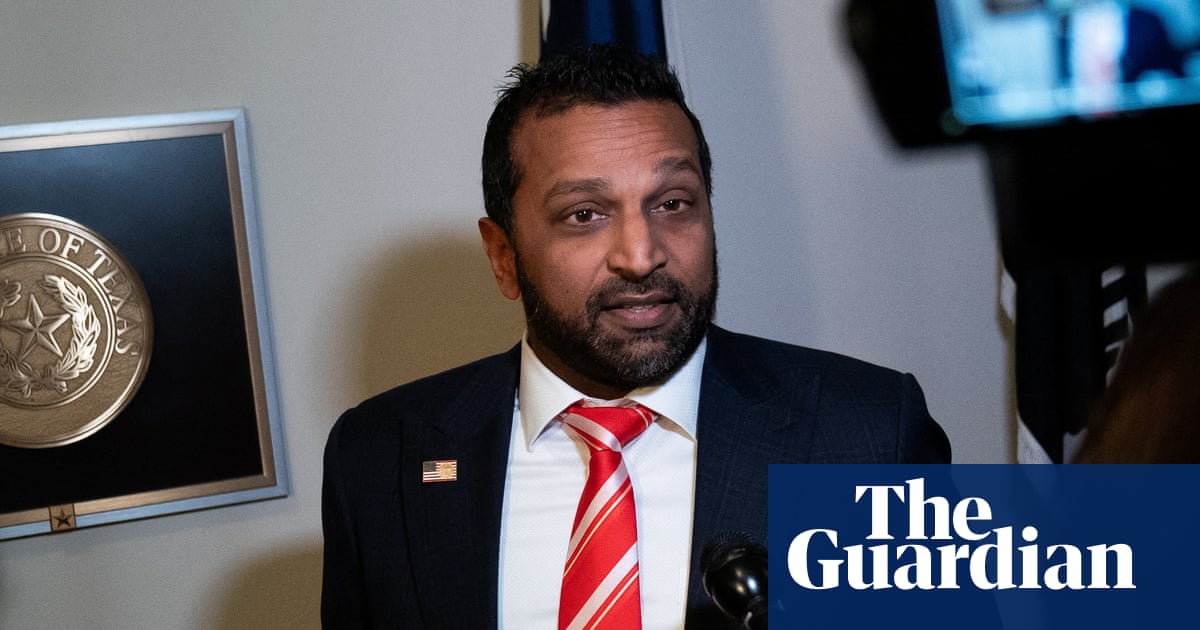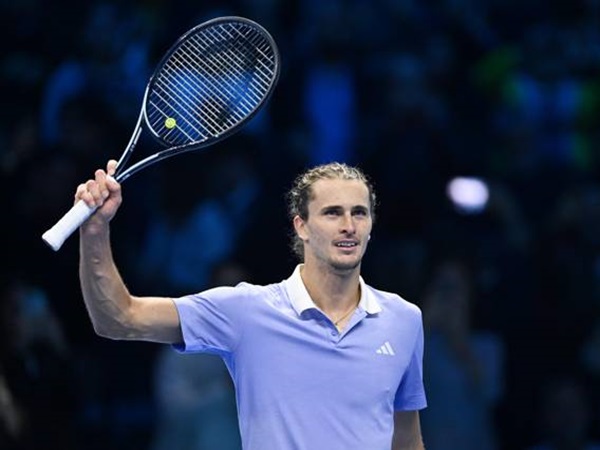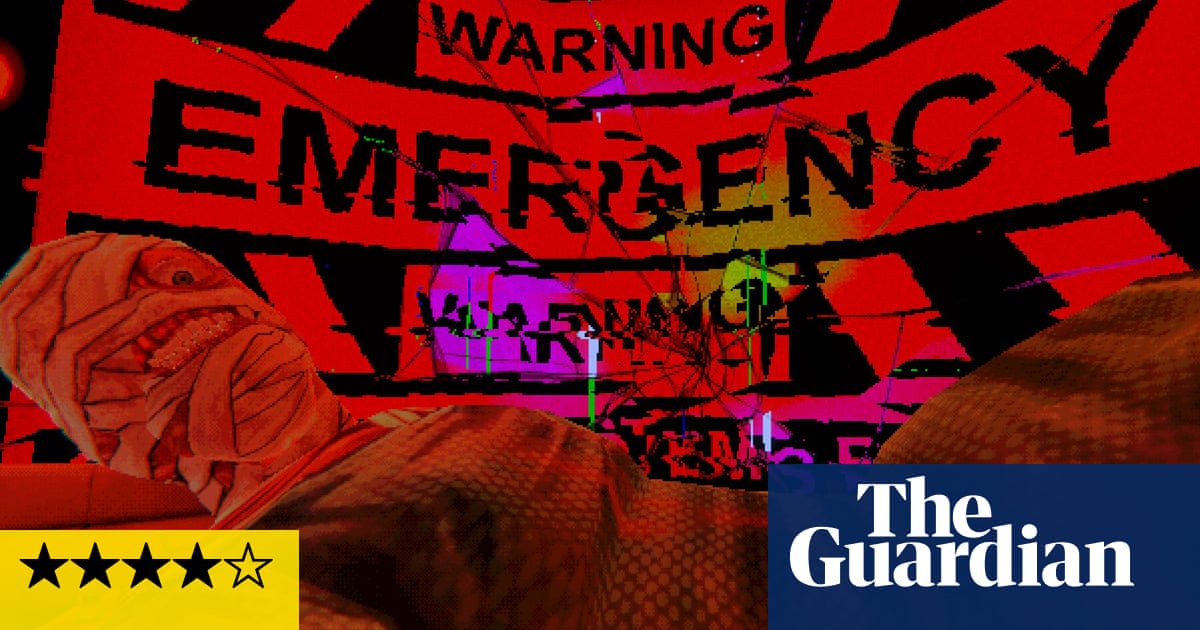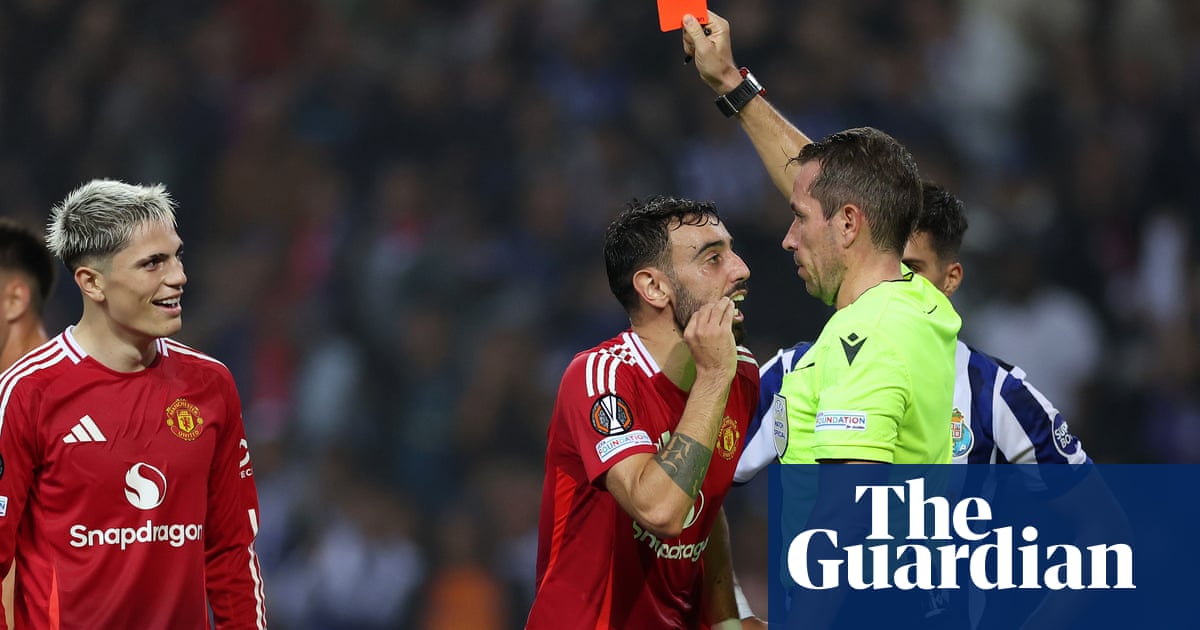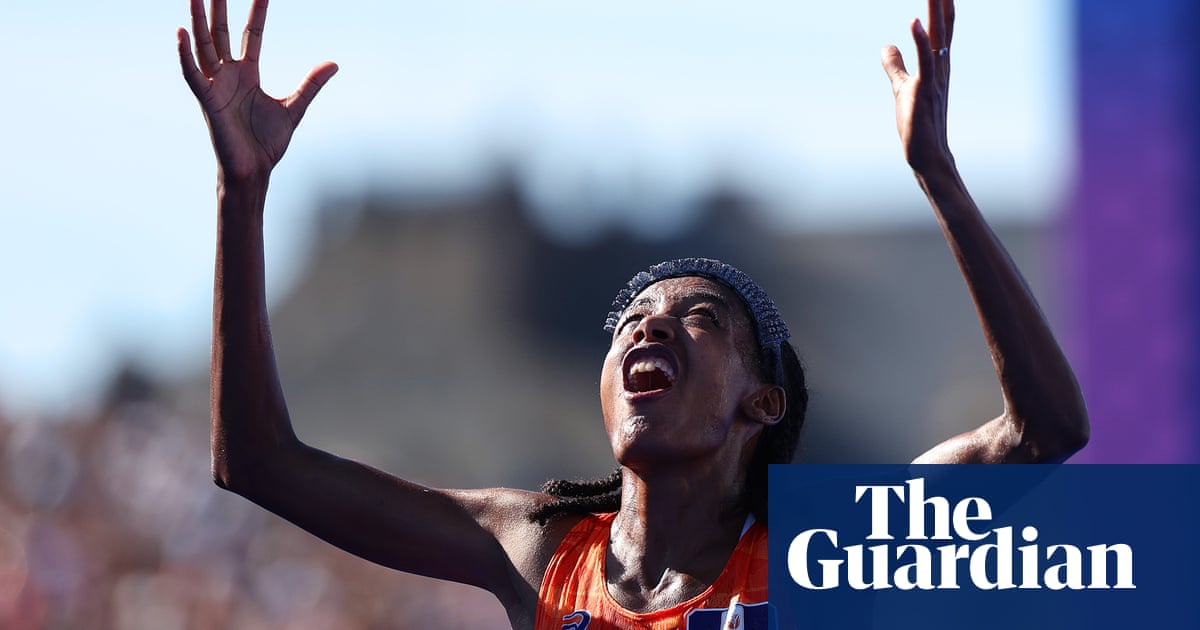It is 11.20pm, and in an instant the emergency centre comes alive. Doctors and medics are conjured up from somewhere nearby to treat two wounded Ukrainian soldiers who have arrived together – one with serious shrapnel injuries to his right eye, the other who had a pile of bricks fall on his chest after a drone strike.
Yet it is the third, who arrives on a stretcher shortly after, who is the worst affected. The dark “panda eyes” signify a brain injury, while his back is also studded with bloody red wounds from drone or mortar fire. He has to be stabilised by half a dozen medics before being transported to a hospital in the rear.
Though the US is trying to broker a ceasefire to end the full-scale war that has run on for more than three years, there is no sign of a slackening of Russian aggression on the ground as the steady stream of night-time arrivals demonstrates. At around 2am, half a dozen lightly wounded appear, their hands and faces dirty and their eyes wide in an exhausted look only possessed by those who have spent days at the front.
Oleskii, who immediately prior to becoming a combat medic last spring had a spell working in the digital department of Ukraine’s public broadcaster doing “all the Facebook, YouTube shit”, says that on a typical night this facility, a mid-point on a wounded soldier’s journey to safety deep in the rear, might treat “five or seven” heavy casualties spread over the night.
If that does not sound excessively busy, consider that the centre has been relocated back and is nominally intended only to treat members of a single unit, the Da Vinci Wolves’ battalion. Its fighters have spent the past 10 months defending the strategic town of Pokrovsk in Ukraine’s east, perhaps the hottest front in the war.
A previous site, Oleskii recalls, was shared with 15 other units. There it was not uncommon to have “100 to 120 patients a night” and he says he was lucky when he got more than 15 minutes’ sleep at a stretch. The work is unrelenting, even after more than three years of full-scale war, but Oleskii says he can cope.
“I have learned that I am very OK with doing this job, because shit happens – that is war. We either fight or we are dead,” he said. It is a feeling he says has been familiar with since February 2022. At that point, he was a soldier in Ukraine’s territorial defence force. “We were thinking: ‘Probably we will be dead in two weeks,’” waiting “on a toss of a coin” in trenches to see if the artillery would hit them.

There are two beds for emergency operations, two more for normal treatment and plenty of modern equipment, including a handheld X-ray unit. After all three are stabilised and moved on, Azizbek Pakhlavonovych, the lead doctor, describes the work that has taken place. Does he need anything more for the medical facility? “Russia to fall apart,” is the unexpected reply.
There is no sign of that, however, and instead every night Ukraine is coming under attack, with several dozen drones and, often, one or two high-speed ballistic missiles. The worst attack came on 4 April, when 19 people, including nine children, were killed after a ballistic missile struck near apartments and a playground at Kryvyi Rih. The youngest was just three years old.
“People were burned alive in their cars near their homes,” a first responder from medical charity Médecins Sans Frontières (MSF) said. But when the US said the strike demonstrated that the war must end, ambassador Bridget Brink would not say the missile was Russian. That prompted a complaint from Ukraine’s president, Volodymyr Zelenskyy, but a fortnight of US yo-yo focus on tariffs meant there has been little diplomatic progress.
A family of three was killed in their house on 21 March in Zaporizhzhia when a Shahed drone, one of a swarm that struck the city that night, smashed into the back of the property, whose large fertile garden overlooked a valley below. A next door neighbour, Larisa, said one of the noisy drones was circling overhead before it struck shortly after 9pm. “Why strike a house? Who knows what they are thinking? Maybe they think I will flee? Where would I go? This house was built by my parents.”

At a newly built subterranean school, cut two storeys below ground so children are safe from attack, Ivan Fedorov, the governor of the Zaporizhzhia region, describes a Russian attack on an electricity site south of Zaporizhzhia city on the morning of 2 April, when 2,000 homes lost power – despite the fact that the Kremlin has publicly signed up to stopping attacking energy infrastructure. Russian attacks are relentless, Fedorov says: “Every few minutes they attack our territory. Every few minutes.”
In Kyiv, Zelenskyy has started holding regular press briefings, perhaps in anticipation of a post-ceasefire election. Tired but relaxed, the leader takes multiple questions as he seeks to explain the diplomatic manoeuvrings. This week, he acknowledged he had little choice but to play a longer game. The Russians, he said, had “a deceitful approach”, targeting the power network with smaller kamikaze drones, and the grim attack in Kryvyi Rih “came as a shock to many in America”.

He told a group of reporters that his core belief was that “I think that President Trump will at some point be able to react to the fact that it is impossible to trust Putin” and said he hoped this would lead to “some decisive steps”. After the debacle of his trip to the Oval Office in early March, where he was berated by Trump, Zelenskyy has little choice but to try to demonstrate that Russia is insincere.
“Fuck Trump,” says Serhiy Filimonov, the commander of the Da Vinci battalion, in English. In Ukrainian he argues that the US appears to be acting as if “Ukraine lost the war and it’s lost the war to the Americans and we have to pay reparations” – despite the fact that, apart from in Kursk in Russia, the front lines are practically stable. Ukraine only lost a modest 133 sq km of its own territory in March, the least for nine months, according to the Deep State group that maps the front lines.
Though the Russian invaders are trying to encircle Pokrovsk, progress has stalled. Improvements to Ukrainian jamming, or electronic warfare, mean that once-deadly glide bombs are far less accurate, while Filimonov says the military high command had finally concluded that “the most powerful units have to [be defending] on the main direction of Russian attacks”, and that the best approach is to let Ukraine’s best run brigades expand rather than creating new units from recruits.

But even a seasoned commander like Filimonov, who has been fighting against Russia since 2014, acknowledged there was no prospect of a dramatic Ukrainian victory on the battlefield, as had been hoped for before the counteroffensive failed in 2023. “I’m more interested in security guarantees. We need to have a united security system with Europe,” he said, arguing that if a ceasefire were to emerge, bringing with it a European-led “reassurance force”, there would have to be a tightening of security relationships on the continent because otherwise “Russia will prepare for a bigger offensive”.
Overnight, Ukraine’s military reported that Russians engaged in 40 combat offensives around Pokrovsk, and with the war not stopping, at least yet, units like Da Vinci prepare for the future. One part of the battalion is focused on developing land drones – remotely controlled bombs that crawl forward on tracked wheels; remotely controlled guns mounted on mobile carriages, and flat trolleys to ferry the dead and wounded from the front line without others having to carry them. The systems are experimental, costing upwards of $1,000 a time, and it is uncertain how far they will be successful.
Oleksandr Yabchanka is Da Vinci’s head of robotic systems, though his background is medical – he worked as a paediatrician before 2014 and in the health ministry thereafter. Already the war in the air has been taken over by drones, causing, on western estimates, 70-80% of all casualties.
Now Yabchanka says he is aiming for a time when, for Ukraine, “robotic systems take over from people on the zero line”. The prospect may be some way off, even unachievable. But Kyiv’s military can do little more than continue developing while peace negotiations drift.

.png) 7 hours ago
2
7 hours ago
2


